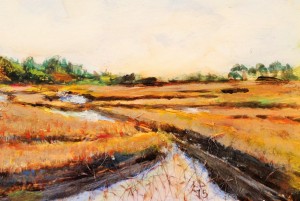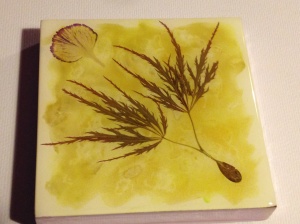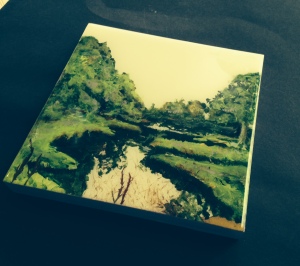For the last three years my work has been exclusively collage. Recently, though, I have focused more closely on my old love of landscape with the result that the collage aspect of those paintings has been limited to foreground grasses which do tend to add an element of depth and perspective by creating for the viewer the illusion that he o she is in close proximity to the image looking far into the distance.
Depending on the nature of the scene, however, and the size of the piece I am finding that adding plants is not a requirement to achieve the desired result. Hence my last three small works (the largest is 6″ x 6″)
While I have no intention of abandoning my work in collage, I did enjoy allowing the paintings to stand on their own.
















